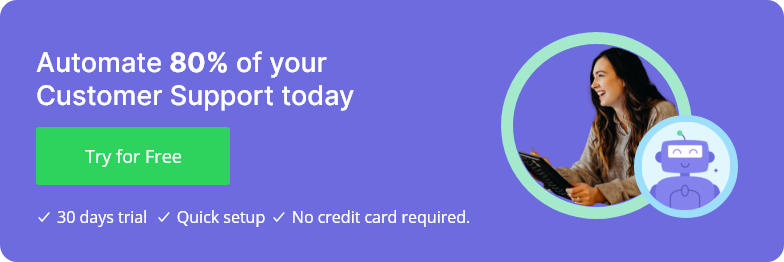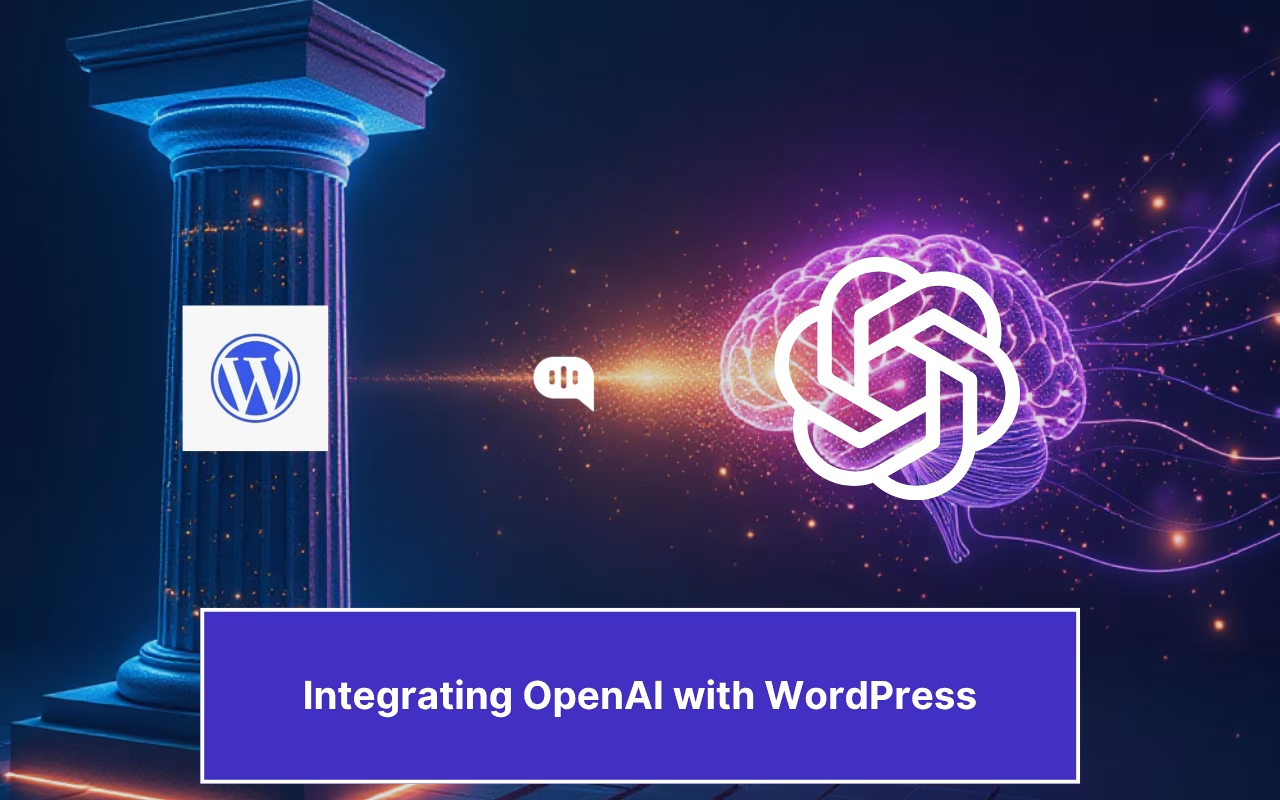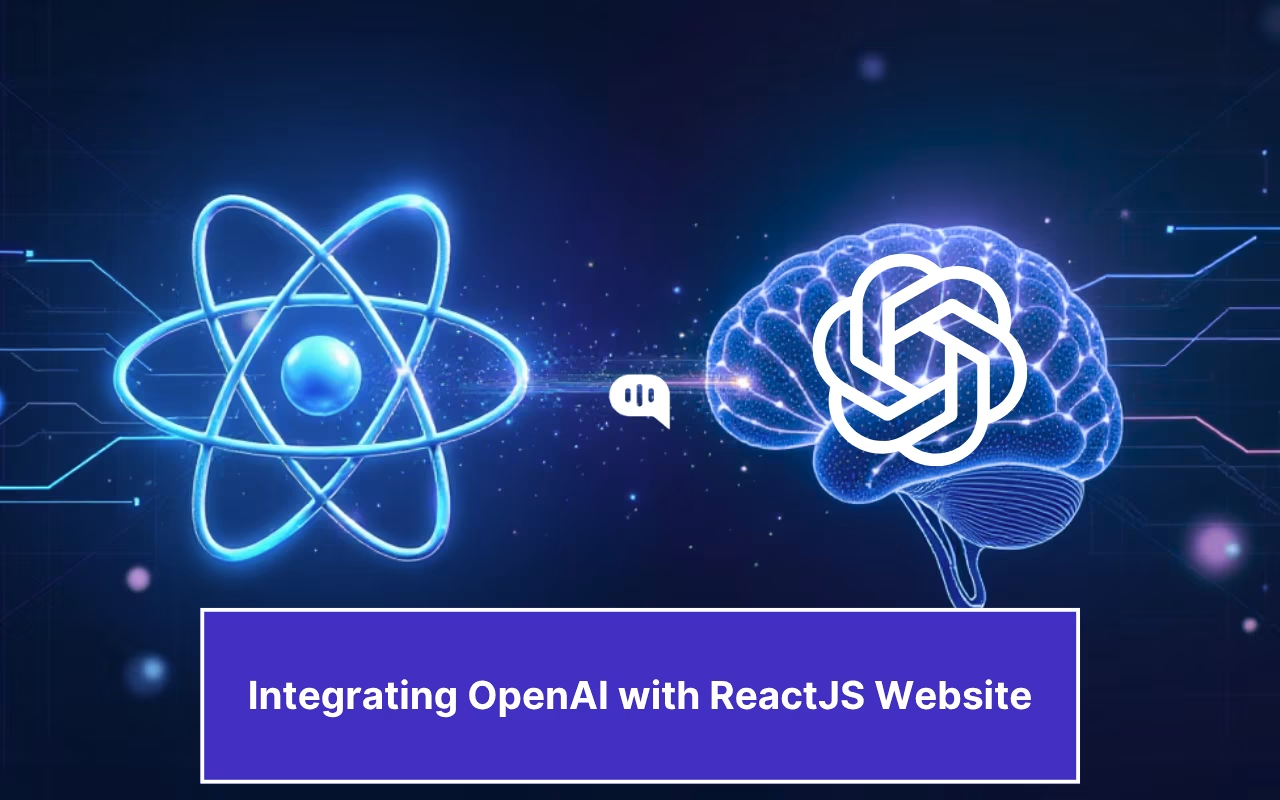Updated on May 15, 2025
The average call center handles around 4400 calls/month. Usually, these calls last around 3 minutes and 35 seconds. As a Customer Service Director, you’re expected to understand and analyze over 250 hours of call tracking data to be on top of all the customer service insights these calls offer.
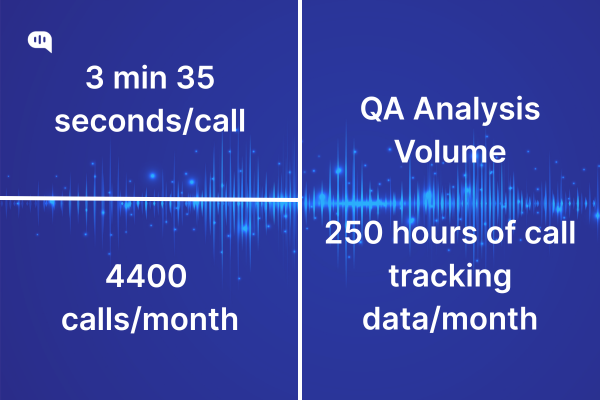
Customer service teams have already realized that listening to these call recordings is impossible. So, the idea for the past few decades has been to track the calls. The idea is to get transcripts from all calls, check for outliers (calls with very low or high ratings), and analyze them to create a consensus.
But even this is not enough. It’s hard to identify positive signals and insights from these transcripts. And you’d ideally want your customer service team to analyze each incoming call.
Conversational intelligence is the technology that can automatically read these call transcripts and identify valuable insights. It can provide you with drill-down performance data and help you understand possible problems with your customer service workflows.
This article will provide you with an overview of this conversational intelligence software. We’re going to show you how these tools benefit and add ROI to your business, and we’ll cover:
1. What is Conversational Intelligence?
2. How Does Conversational Intelligence Work?
3. What are the Key Features of Conversational Intelligence Platforms?
4. What are the Benefits of Using Conversational Intelligence?
5. How is Conversational Intelligence Used in Real Life?
What is Conversational Intelligence (CI)?
As we said in the beginning, conversational intelligence refers to tech that uses AI and machine learning to analyze customer conversations and give you insights into them. Usually, whatever data you get from voice calls and video calls is very unstructured. Even if you have transcripts and call recordings, it’s a huge task to go through them systematically and find areas of improvement.
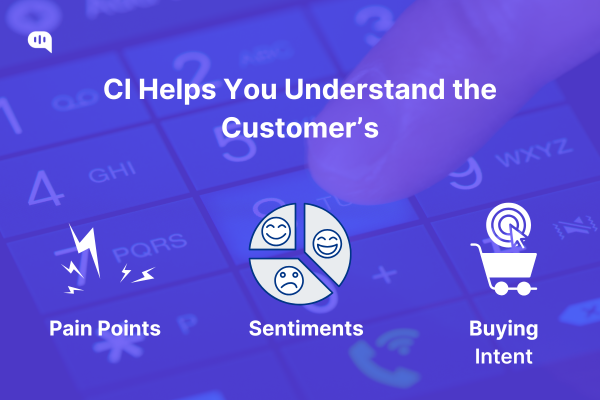
CI helps you find specific patterns in customer communications and enables you to identify –
- Pain points
- Customer Sentiment
- Purchasing Intent
These insights from customer service conversations create an actionable feedback loop for the marketing and product teams and help them become more customer-centric. By carefully reacting to the feedback from customer service, the overall business can
- Improve product and marketing strategy
- Refine sales targeting
- Make better business decisions
In large enterprise organizations, CI is the only reliable way to structure and identify specific points from customer feedback. Right now, with enterprises making a concerted effort to include voice AI agents in their customer service workflows, CI tools are also crucial in improving training and compliance procedures.
To better explain the specific function and ROI of conversational intelligence (CI), we will contrast it with conversational AI and call routing in the next section.

Conversational Intelligence (CI) v/s Conversational AI (CAI) v/s Call Tracking
Though CI, CAI, and call tracking software all play some part in the customer service process of businesses, they’re distinct tools with specific purposes. We’ve summarized the differences in the table below:
| Feature/Aspect | Conversational Intelligence (CI) | Conversational AI (CAI) | Call Tracking Software |
| Primary Function | Analyze conversations for insights, patterns, sentiment, performance | Participate in conversations, automate interactions, provide responses | Monitor, record, and track basic phone call metrics |
| Core Technology Focus | NLP (NLU, Sentiment), ML, ASR (for voice) | NLP (NLU, NLG), ML, Dialogue Management | Call recording, telephony integration, basic analytics |
| Interaction Role | Observer / Analyzer (background or post-interaction) | Participant / Responder | Logger / Recorder |
| Primary Output | Actionable insights, summaries, coaching feedback, trend analysis | Responses, task completion, automated support | Call logs, recordings, basic metrics (duration, source) |
| Example | Gong, Salesloft Conversations, Chorus, CallMiner | Chatbots, Virtual Assistants (Siri, Alexa), IVR systems with natural language capability | Basic call-logging features in some phone systems or CRMs |
Now that we understand the fundamentals around CI, let’s start analyzing how it works.
How Does Conversational Intelligence Work?
Customer service phone calls and chats are unstructured and unsolicited data. You can’t predict when they happen and don’t get a structured output that you can measure or analyze.
Conversational Intelligence tools structure this data and make it easier to process and understand. This uses three separate machine-learning processes:
1. Natural Language Processing (NLP) – To understand what the customer says during the call.
2. Automatic Speech Recognition (ASR) – To translate the voice of the customer into structured text
3. Data Analysis – To measure and analyze customer sentiment and identify patterns from customer service conversations
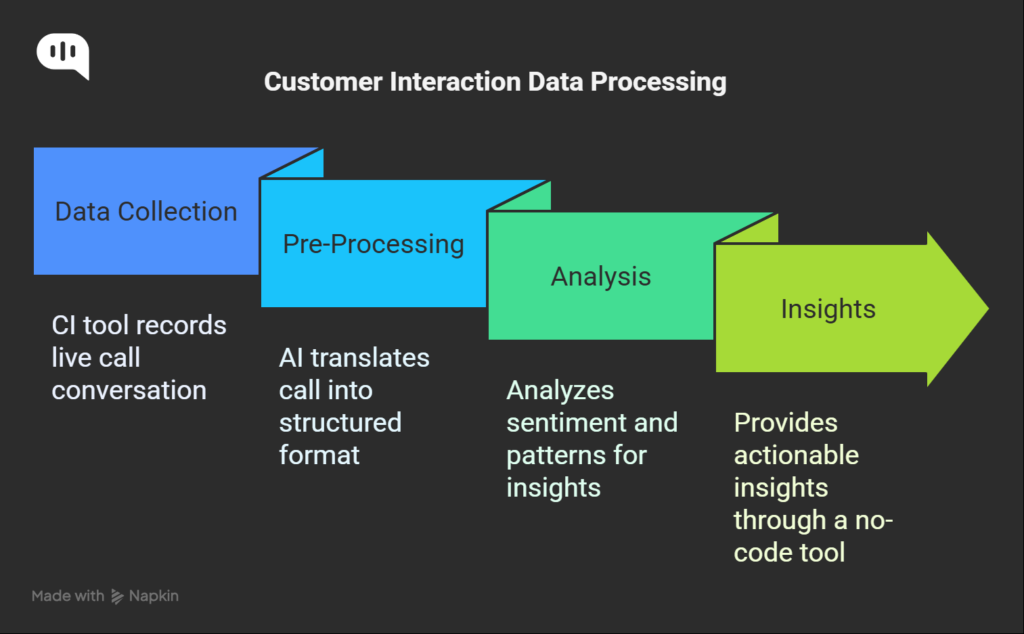
Overall, this end-to-end process happens like this:
1. Data Collection – During every live call, your CI tool will record the conversation by listening.
2. Pre-Processing – The AI uses ASR to translate the call into a structured format like JSON.
3. Analysis – The data analysis pipeline understands the customer sentiment, recognizes patterns in the data, and gathers business insights.
4. Insights – A no-code tool like Kommunicate’s Insights gives you actionable insights into the data.
These processes are used universally across voice AI agents. Now, we’ll explain how this works explicitly for Kommunicate’s voice AI agent platform.
How Does Kommunicate Gather Conversational Intelligence from Customer Calls?
Kommunicate’s process of gathering conversational intelligence is very comprehensive. We do the following –
1. Gathering Data – All your conversations from chat, emails, and calls are pulled into your Kommunicate dashboard.
2. Processing – We use this data and provide our data analytics AI with the information it needs to provide you with up-to-date insights
3. Insights – Our Insights feature lets you assess individual and team performance, see patterns in questions, and understand customer pain points through simple questions and answers.
For example, we asked the CI agent for one of our enterprise BFSI clients about common patterns in customer questions:
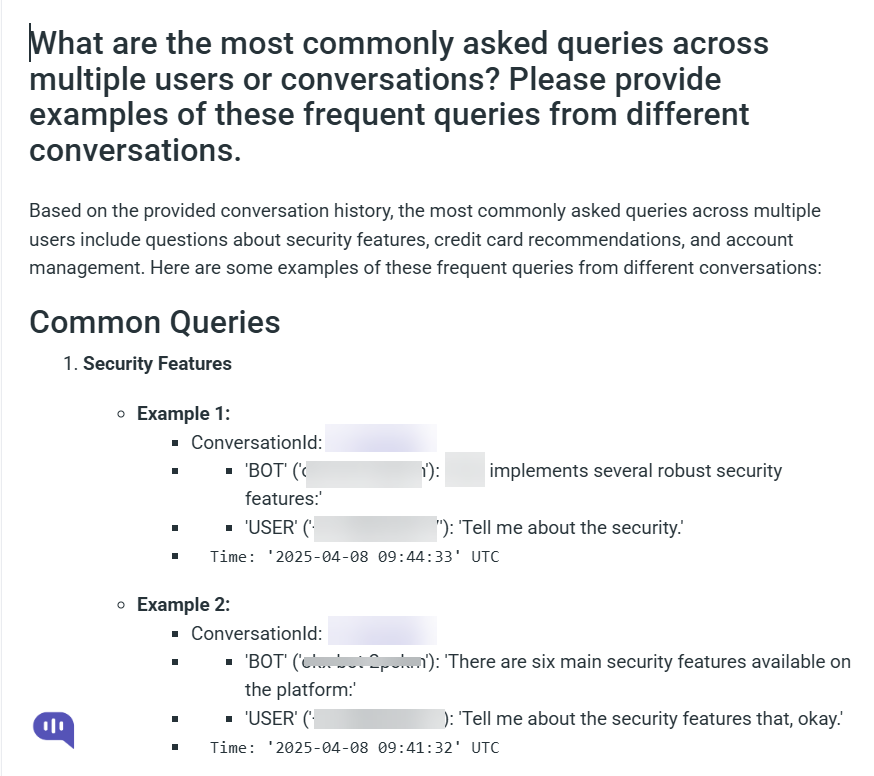
As you can see, the most common questions received by our BFSI clients revolve around credit cards, security, and account management.
Now that you understand how CI processes work, let’s drill down on the key features you should look for on these platforms.
What are the Key Features of Conversational Intelligence Platforms?
When we developed our conversational intelligence feature, we looked at 10 competitors who worked for different industries. These are the features that we found:
| Feature Category | Key Feature | Description/Purpose |
| Data Capture & Processing | Call/ Meeting Recording | Automatically records audio calls. |
| Multi-Channel Data Ingestion | Captures interactions beyond calls, including email, chat, SMS, and social media messages. | |
| Transcription (Speech-to-Text/ASR) | Converts spoken language from audio/video recordings into searchable text using Automatic Speech Recognition. | |
| Speaker Diarization/Identification | Identifies and distinguishes between different speakers in a conversation. | |
| Secure Cloud Storage | Stores recordings, transcripts, and analyses securely in a central dashboard | |
| Analysis & Insight Generation | Automated Summaries & Action Items | Uses AI to generate concise summaries of conversations, highlighting key points, decisions, and follow-up tasks. |
| Sentiment Analysis | Analyze language (and sometimes tone) to determine participants’ emotional state (positive, negative, neutral). | |
| Keyword/Topic Spotting & Tracking | Automatically identifies and tracks mentions of predefined keywords, phrases, competitors, products, objections, or topics within conversations. | |
| Predictive Analytics/Forecasting | Historical data and conversation analysis are used to predict future behavior, deal outcomes, or generate sales forecasts. | |
| Performance Tracking | Performance Dashboards & Analytics | Visualizes individual and team performance metrics, trends, and comparisons over time. |
| Real-Time Agent Guidance/Assistance | To improve performance, offer agents prompts, suggestions, or relevant information during live interactions. | |
| Integration & Workflow Capabilities | CRM Integration | Connects deeply with CRM systems (e.g., Salesforce, HubSpot) to log activities, link recordings, sync data, and provide context. |
| Calendar Integration | Integrates with calendar apps (e.g., Google Calendar, Outlook) to automatically identify and join scheduled meetings for recording. | |
| Other Integrations | It connects with various tools like communication platforms (Slack, Teams), sales engagement tools, BI tools, etc. | |
| Analytics, Reporting & Compliance | Reporting Capabilities | Generates reports on various metrics and analyses (e.g., sentiment trends, topic frequency, team performance). |
| Compliance Monitoring | Automatically scans conversations for adherence to scripts, disclosures, and regulations (e.g., PCI, HIPAA, GDPR). | |
| Search & Filtering | Allows users to search transcripts and filter recordings based on various criteria (keywords, participants, date, topics, etc.). |
Adding a third-party app for conversational intelligence for more drill-down features can be beneficial. However, in our experience, combining the customer service platform with native CI tools helps teams move faster without switching apps for analytics and conversations.
The following section will explore how these native integrations with CI tools can help your business solve customer problems faster.
What are the Benefits of Using Conversational Intelligence?
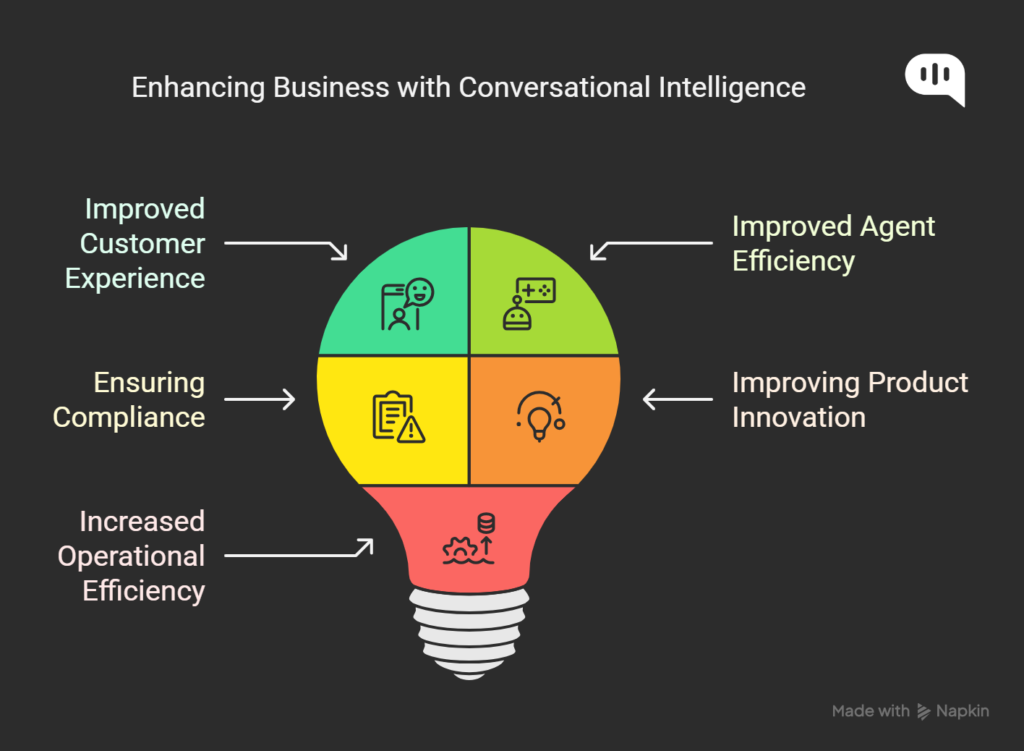
Combining chat, email, and voice AI with a native conversational intelligence tool can create a new competitive edge for your business. This happens in the following ways –
1. Improved Customer Experience
When you understand your customers better, you get a better chance at improving customer experience. Customer intelligence tools are great at capturing the voice of the customer (VoC). So, you get insights into their pain points, preferences, and sentiments.
With this data, you can offer more personalized experiences to your customers. Additionally, since your human agents can access the whole history of a customer’s communication with the business, their solutions become more contextualized and pointed.
Put these two actions together, and you will get improved CX, CSAT, and NPS with a CI tool.
2. Improved Agent Efficiency
Since customer service is primarily human-driven and the communication is unsolicited, agents often struggle to identify specific points of improvement. A conversational intelligence tool can investigate an agent’s performance across different conversations and determine if they need to improve in objection handling, questioning techniques, or balancing talk times.
Plus, a CI tool can find the specific strengths and tricks of the top performers. This will help you provide actionable feedback to your junior agents and improve team performance every quarter.
3. Ensuring Compliance
In heavily regulated sectors like BFSI, adhering to scripts and making certain disclosures is very important. Your AI conversational intelligence tool can keep track of these processes and give you insight into possible risks before they become widespread.
Usually, quality assurance in customer conversations requires a team to manually test randomly selected calls. With CI tools, you can test every call and achieve higher accuracy and precision in maintaining quality and compliance.
4. Improving Product Innovation
The voice of the customer (VoC) we discussed in the first point is also a force multiplier for product innovation. Once you deeply understand the needs of the customer and their pain points, you can use them to direct your product and marketing innovations.
You can use these insights to segment your customers, identify future product opportunities, and guide your account-based marketing processes.
5. Increased Operational Efficiency
One of the most significant benefits of CI is operational efficiency. When leaders from the customer service function are not spending much time directing QA efforts, they can focus on optimizing and innovating the function.
For example, with more time outside QA, you could focus on finding the recurring problem that your team is facing and perform a detailed RCA (root cause analysis).
Additionally, CI reduces the time-to-insights for customer communications and makes it easier for customer service to create a feedback loop with the product and marketing teams. This increases the organization-wide efficiency.
It’s important to note that these benefits often occur together in a flywheel, making the CI tool important across the organization. Now that you understand CI tools’ core benefits and functions, we want to provide a specific real-life example of how it works.
How is Conversational Intelligence Used in Real Life?
Wealth Management
One of the best case studies of CI from a wealth management client in the US. Before the organization implemented AI tools (voice and text-based AI agents), their call center costs ballooned, and they faced significant problems with lower CSAT and NPS scores.
By implementing an AI agentic system with CI tools, they saw –
1. Call volumes were reduced by 166,000 calls/year.
2. Savings of nearly $7 million
The CI tool played a large part in this, with the insights from customer conversations becoming training data for the AI agents. This created a feedback loop of improvement that helped the business save more hours without spending months optimizing its AI tools.

Sym-Tech Dealer Services
Sym-Tech Dealer Services, a provider of automotive finance and insurance services, faced problems performing QA of their customer service function.
With a CI tool, they were able to improve their performance evaluations and increase overall efficiency. These also implement AI voice agents to automate their operations and improve their customer service function overall.
Forrester also examined competitors of voice AI and CI tools to estimate their economic impacts. According to them, these agents can drive 191% ROI in the first year of implementation with improvements in efficiency and operations.
Conclusion
Voice AI agents and conversational intelligence tools are a force multiplier for call center-heavy operations. They form the backbone of many modern CCAAS tools that people use.
We have seen how combining these tools lets you move away from the pure analytics of call tracking and helps you improve the day-to-day life and operations of the customer service function. It enables you to enhance agent productivity and product innovation, ensure compliance, and improve customer experience.
If you are looking for a CCAAS tool that works along these lines and gives you the benefits of CI and voice AI tools under one platform, we have just built a voice AI solution. Talk to us, and we can help you create a custom trial agent for your business.

CEO & Co-Founder of Kommunicate, with 15+ years of experience in building exceptional AI and chat-based products. Believes the future is human + bot working together and complementing each other.

